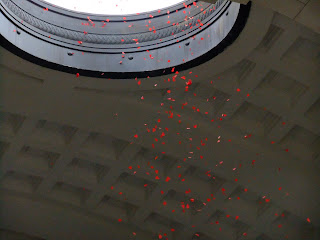Battle of the Menin Road (YouTube Clip)
In November I was privillaged to represent Mid and West Wales Fire and Rescue Authority at the Menin Gate Ceremony, Ypres on Armistice day the 11/11/2011 accompanied by fellow Fire Authority member Steve Lloyd Janes, and ably guided by Service General Manager Roger Thomas and Station Manager Gary Williams.
What struck one immediately on visiting Ypres were the number of cemeteries (some 170) that were concentrated within such a small area. Knowing the numbers does not somehow bring the true reality of the carnage – to be there brings the reality of what happened almost 100 years ago, literally in front of our eyes. There are some 170 cemeteries within the vicinity of the town. Gary our guide with his wealth of knowledge of the history and his infectious enthusiasm was an inspiration to open our eyes to the enormity of the devastation.
It’s a history lesson that unfortunately we are slow to learn. Our politicians are still too ready to go to war. Ypres these days has the title of "city of peace" and maintains a close friendship with another town on which war had a profound impact: Hiroshima. Both towns witnessed warfare at its worst: Ypres was one of the first places where chemical warfare was employd, while Hiroshima suffered the debut of nuclear warfare. The city governments of Ypres and Hiroshima advocate that cities should never be targets again and campaign for the abolition of nuclear weapons. The City of Ypres hosts the international campaign secretariat of Mayors for Peace, an international Mayoral organization mobilizing cities and citizens worldwide to abolish and eliminate nuclear weapons by the year 2020. Mayors for Peace 2020 Vision Campaign
During World War I, Ypres was the centre of intense and sustained battles between the German and the Allied forces. Of the battles, the largest, best-known, and most costly in human suffering was the Third Battle of Ypres (21 July to 6 November 1917, also known as the Battle of Passchendaele), in which the British, Canadians, ANZAC, and French forces recaptured the Passchendaele Ridge east of the city at a terrible cost of lives. After months of fighting, this battle resulted in nearly half a million casualties to all sides, and only a few miles of ground won by Allied forces. Indeed the front line hardly moved throughout the period of the war. During the course of the war the town was all but obliterated by the artillery fire.
Battle of Ypes (You tube Clip)
Battle of Ypes (You tube Clip)
